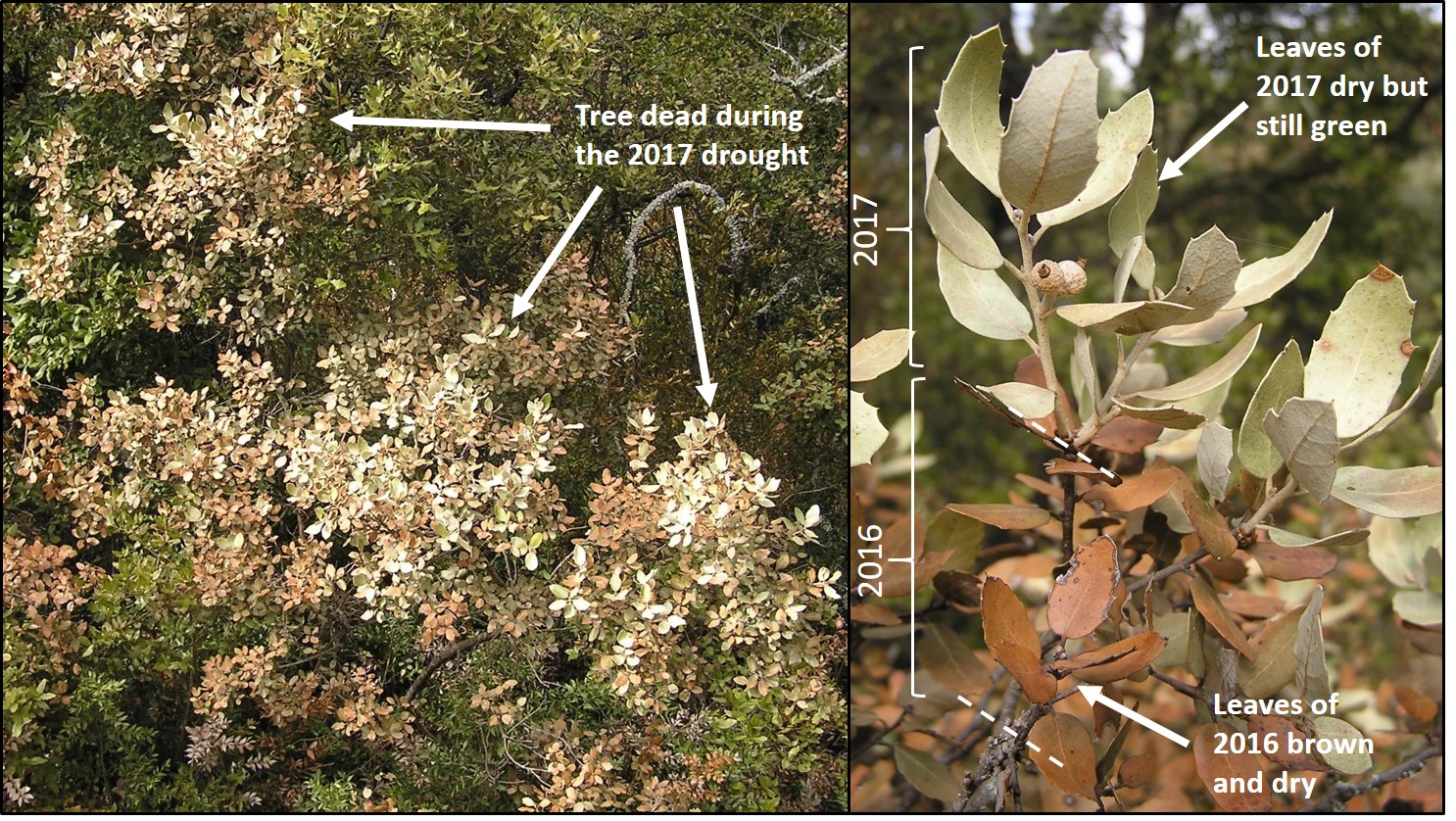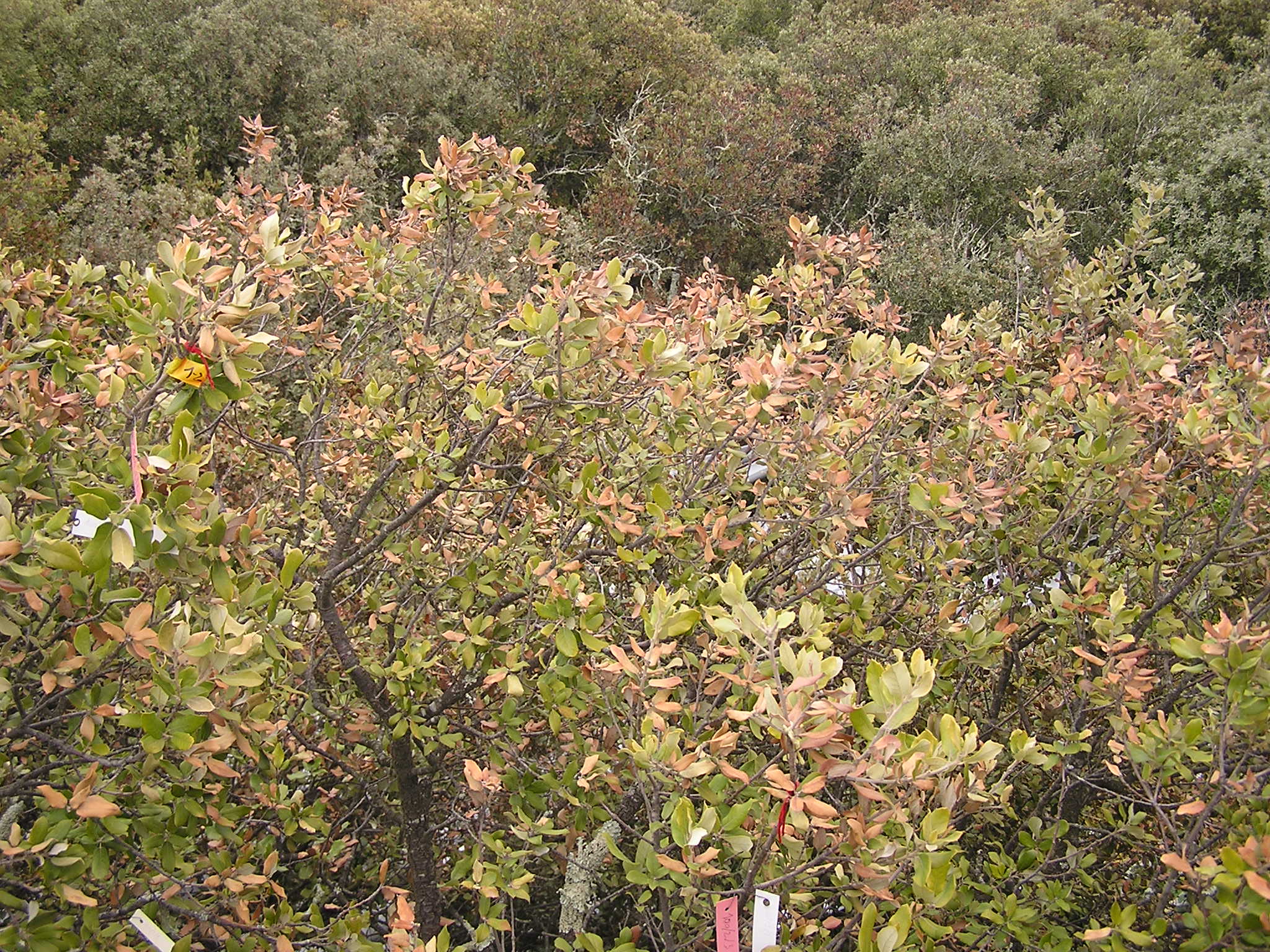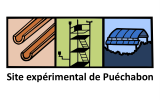When is drought dry enough to induce tree mortality ? The exceptional drought of the summer 2016 clearly was not as the trees all recovered after experiencing the most negative water potential ever measured at the experimental site of Puéchabon (-4.47 MPa on average on the 13th of September 2016). The long lasting drought that the region is currently experiencing during this autumn 2017 might however qualify as extreme for the holm oak forest of Puéchabon. Less than 20 mm of precipitation has reached the site since the beginning of July and the water potential of the trees was measured to be -5.02 MPa on the 11th of October, thereby setting a new absolute record for tree water stress in Puéchabon. Several trees were observed to have their water potential below -6MPa, which is the air entry point in the holm oak xylem according to the latest estimates. Most of the trees at the site are now partly defoliated, and brown and dry leaves can be seen on almost every tree (see picture below). But what is even more worrisome is that drought-induced tree mortality can be observed on a few trees that died suddenly in the past weeks (see second picture showing a dry tree and a dry branch exhibiting typical drought-induced hydraulic failure). This is the first time that drought-induced hydraulic failure is spotted at the Puéchabon experimental site. Only a few and trees have died yet and only among the smallest ones. But how long will the others survive if the rain does not come back ?







